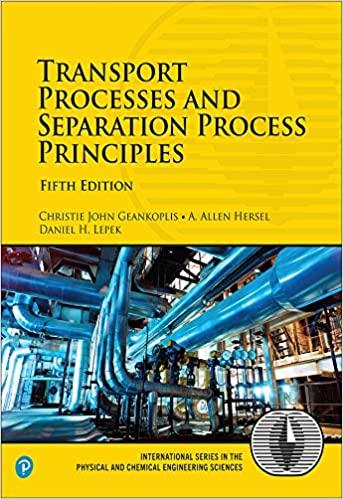Answered step by step
Verified Expert Solution
Question
1 Approved Answer
A farmer uses underground water for its daily consumption. This water contains 1 0 0 mg KNO 3 per liter. The farmer wants to reduce
A farmer uses underground water for its daily consumption.
This water contains mg KNO
per liter. The farmer wants to reduce this salt concentration to mgL to be able
to use this water as drinking water, and needs each day m drinking water.
For that purpose, he uses a CED process with compartments. Each compartment has a volume equal to m
This
process integrates elementary cells with a CEM as a central membrane in each compartment.
Each rectangular membrane is m thick, has as dimensions:
cm and is separated from another
membrane or electrode by a distance equal to cm Its boundary layer has a thickness equal to m
The membrane material has the following properties: density: gcm
hydration rate: IEC: meq g
Other data:
DK
m s
DK
m s
DNO
m s
DNO
m s
Lambda
deg deg K mSm mol
Lambda
deg deg NO mSm mol Calculate:
The concentration of functional sites W counter ions CK and co ions CNO in each membrane
The transport numbers of both K and NO in the solution and in the membrane
The conductivities of the solution and of the membrane and also the specific resistance of the membrane
The limiting current density and the most suitable current density and current to operate the process
The maximum and real concentrate concentrations
The faradic yield, quantity of charge, duration and energetic consumption of the process
Step by Step Solution
There are 3 Steps involved in it
Step: 1

Get Instant Access to Expert-Tailored Solutions
See step-by-step solutions with expert insights and AI powered tools for academic success
Step: 2

Step: 3

Ace Your Homework with AI
Get the answers you need in no time with our AI-driven, step-by-step assistance
Get Started


